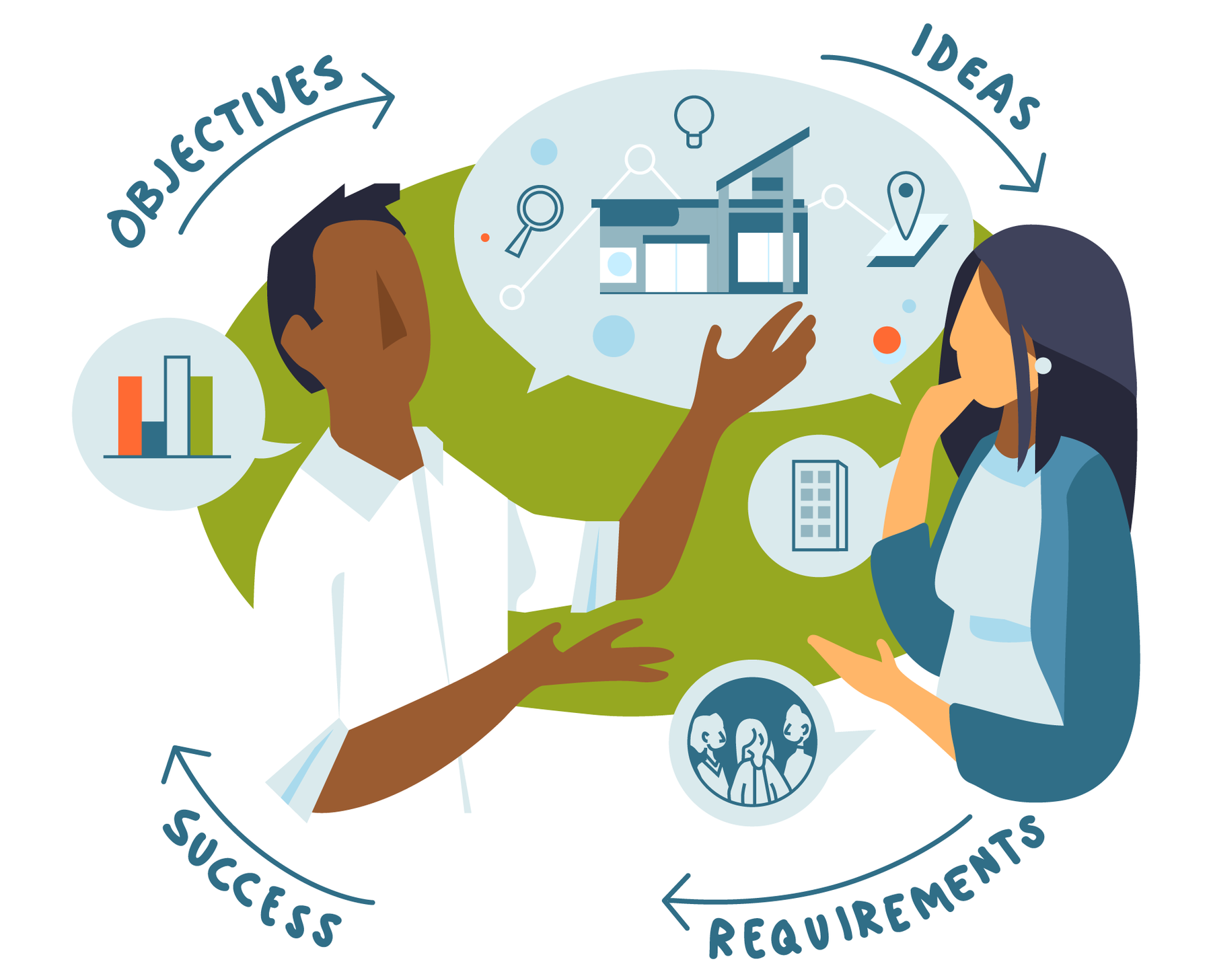Want to learn the secret behind consistently delivering successful projects? We've put together a series of articles to give you insight into our process - and this process not only applies to the design-build process but any projects you take on in your own organization. Each of these articles will help you dive into a different aspect of our process.
Project Planning
We have often written and given talks about how the nature of work is changing, and here at Momentum we are no exception. Much like how the financial industry has seen both retail and operations transformed by technological innovations, we’ve built a revolutionary project management process around cutting edge tools. And we believe that following our case study can help you build more robust project management processes on your own team.
Alignment Session
One of the most critical steps in the beginning of a project is gathering all of the stakeholders and aligning them around a common goal. With multiple teams, external partners, and competing requirements, this can be a difficult task. This is why we kick off every project with an alignment session, a meeting focused on uncovering and prioritizing the requirements and objectives of each stakeholder and organizing them in a way that guides every project participant forward towards a common goal.
Design Charrette
The design of a branch or workplace doesn’t happen in a vacuum, it’s a fundamentally collaborative process. Or at least we believe it should be. Surprise or disagreement among stakeholders after a design presentation is an unfortunately common occurrence, and it’s usually due to miscommunication in the hand-off between a building user’s requirement discussions and the design process.
We have a solution to this, nurturing that hand-off and integrating our clients into the design process. We kick off the design phase of our projects with the charrette, a live, collaborative design session. Here, key project stakeholders sit down with Momentum’s project management and design team to hash out design concepts and develop a conceptual design.
Engaging Stakeholders
When the delivery of a new facility project falls flat, failing to meet an organization’s goals or to engage employees and customers, it can often be attributed to a lack of representation of a key point of view in the decision-making process.
Think about all of the stakeholders in your organization, from the executive team and department heads to your front-line staff and members or customers. If you engage them at the right time in a project, when their perspective and expertise can have the most impact, the result is more resilient branches and workplaces that not only fulfill your goals but also work better for the people who use them.
In this entry of our "Learn the Process" series, we explore how, why, and when to engage stakeholders in a facilities project.
Procurement
Procuring labor and materials is where some of the biggest risks are introduced into a project. This process also presents an opportunity to maximize the portion of the project costs that are reinvested in your local community.
In the this entry of our "Learn the Process" series, we take a deep dive into how to optimize the procurement process to deliver better, more resilient projects that represent an investment in the people who live, work, and bank in your community.
Design-Build
We believe that collaboration and open communication are the foundation of successful projects. In the design-build project model, sharing knowledge and ideas is fundamental.
Design-build breaks down barriers between the designer, the builder, and the people who will actually use the building. The team works together to establish a shared vision of success. Everyone is free to contribute their best ideas at the right time, when they have the greatest chance of improving the project.
On a design-build project, as team members experience the value of integrating diverse viewpoints, they develop trust. Communication increases. Friction decreases. The project takes on its own forward motion, and the sense of tangible progress makes the process energizing and fun.
Design-build eases the fits, starts, and frustrations that often come with complex building projects. When team members are collaborating actively, they can validate ideas, give immediate feedback, and hold each other accountable to the project vision along the way. The average design-build project costs less and is delivered faster, with a higher level of quality. Owners report better strategic outcomes such as increased productivity and customer satisfaction.
At Momentum, we believe a design-build partnership delivers better relationships, and it delivers better buildings.
The Next Level of Technology in Project Management
Want to see how our project team drove a digital transformation around the project management process? We've put together an article going into detail with lessons that you can take away to achieve similar goals in your own organization!
How We Minimize Construction Waste to Deliver Better Projects
Facilities projects are incredibly complex and can span years over planning, design, and construction phases. So many moving pieces over time create sources of waste. Left unchecked, this can mean wasted time, wasted materials, and ultimately wasted money.

